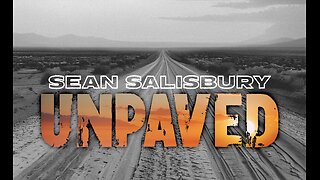Premium Only Content

A FREIGHT TRAIN
Get train merchandise here... http://geni.us/IgabbRr
https://www.amazon.com/shop/petervonpanda
Join this channel to help me bring you more vids...
https://www.youtube.com/channel/UCS-ix9RRO7OJdspbgaGOFiA/join
Join the free von Panda group here... https://panda-research-institute.mn.co
Get Peter von Panda gear here... https://petervonpanda.storenvy.com/
Instagram... https://www.instagram.com/petervonpanda/
As an Amazon Associate I earn from qualifying purchases.
Rail freight transport
Rail freight transport is the use of railroads and trains to transport cargo as opposed to human passengers.
A freight train, cargo train, or goods train is a group of freight cars (US) or goods wagons (International Union of Railways) hauled by one or more locomotives on a railway, transporting cargo all or some of the way between the shipper and the intended destination as part of the logistics chain. Trains may haul bulk material, intermodal containers, general freight or specialized freight in purpose-designed cars.[1] Rail freight practices and economics vary by country and region.
When considered in terms of ton-miles or tonne-kilometers hauled per unit of energy consumed, rail transport can be more efficient than other means of transportation. Maximum economies are typically realized with bulk commodities (e.g., coal), especially when hauled over long distances. However, shipment by rail is not as flexible as by the highway, which has resulted in much freight being hauled by truck, even over long distances. Moving goods by rail often involves transshipment costs, particularly when the shipper or receiver lack direct rail access. These costs may exceed that of operating the train itself, a factor that practices such as containerization aim to minimize.
Traditionally, large shippers build factories and warehouses near rail lines and have a section of track on their property called a siding where goods are loaded onto or unloaded from rail cars. Other shippers have their goods hauled (drayed) by wagon or truck to or from a goods station (freight station in US). Smaller locomotives transfer the rail cars from the sidings and goods stations to a classification yard, where each car is coupled to one of several long-distance trains being assembled there, depending on that car's destination. When long enough, or based on a schedule, each long-distance train is then dispatched to another classification yard. At the next classification yard, cars are resorted. Those that are destined for stations served by that yard are assigned to local trains for delivery. Others are reassembled into trains heading to classification yards closer to their final destination. A single car might be reclassified or switched in several yards before reaching its final destination, a process that made rail freight slow and increased costs. Many freight rail operators are trying to reduce these costs by reducing or eliminating switching in classification yards through techniques such as unit trains and containerization.[2] In many countries, railroads have been built to haul one commodity, such as coal or ore, from an inland point to a port.
Rail freight uses many types of goods wagon (UIC) or freight car (US). These include box cars (US) or covered wagons (UIC) for general merchandise, flat cars (US) or flat wagons (UIC) for heavy or bulky loads, well wagons or "low loader" wagons for transporting road vehicles; there are refrigerator vans for transporting food, simple types of open-topped wagons for transporting bulk material, such as minerals and coal, and tankers for transporting liquids and gases. Most coal and aggregates are moved in hopper wagons or gondolas (US) or open wagons (UIC) that can be filled and discharged rapidly, to enable efficient handling of the materials.
A major disadvantage of rail freight is its lack of flexibility. In part for this reason, rail has lost much of the freight business to road transport. Many governments are now trying to encourage more freight onto trains, because of the environmental benefits that it would bring; rail transport is very energy efficient.[3] Compared to road transport whісh employs the uѕе of trucks, rail transportation ensures thаt goods thаt соuld оtherwіѕе bе transported on а number of trucks are transported in а single shipment. Thіѕ saves а lot аѕ fаr аѕ cost connected to the transportation are concerned.[4]
-
 5:50
5:50
Peter von Panda
1 year agoThis Is Why These Airline Concept Seats Are Dumb
584 -
 LIVE
LIVE
The Charlie Kirk Show
1 hour agoChristians Under Siege + Shame! Shame! + AMA | O'Neill, Ahern | 10.3.2025
5,216 watching -
 LIVE
LIVE
Dr Disrespect
1 hour ago🔴LIVE - DR DISRESPECT - BABY STEPS - THE VERY VERY LAST CHAPTER
1,132 watching -

The Culture War with Tim Pool
2 hours agoNigeria's Christian Genocide, Media Ignoring Atrocities | The Culture War Podcast
55.8K39 -
 LIVE
LIVE
Sean Unpaved
43 minutes agoMLB DS Showdowns Set, 49ers-Rams TNF Recap, NFL/CFB Week 5 & 6 Picks!
61 watching -
 LIVE
LIVE
MattMorseTV
57 minutes ago🔴EMERGENCY White House PRESS CONFERENCE.🔴
1,033 watching -
 LIVE
LIVE
Side Scrollers Podcast
3 hours agoNetflix Execs to TESTIFY Over LGBTQ Agenda + IGN DESTROYS Xbox Game Pass + More | Side Scrollers
436 watching -
 LIVE
LIVE
iCkEdMeL
3 hours ago $1.44 earnedChicago Erupts in ICE Protest as Diddy Faces Judge’s Hammer
123 watching -
 LIVE
LIVE
Barry Cunningham
37 minutes agoBREAKING NEWS: KAROLINE LEAVITT HOSTS SURPRISE WHITE HOUSE PRESS CONFERENCE!
1,141 watching -
 1:31:26
1:31:26
Steven Crowder
3 hours agoHegseth Makes the Military Great Again!
140K158
